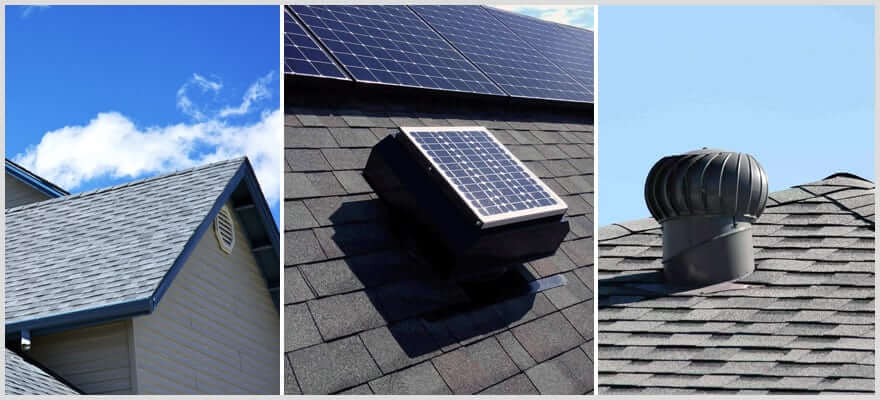Roofs are one part of the house that is exposed to a lot of damage from external factors. However, shingles could also peel off because of mildew and mold that grows because of a poorly ventilated attic.
Poorly ventilated attics could reach up to 130 degrees F, and the best way to keep them ventilated is by using roof vents. They enable the hot and humid air to escape, and you can get yours in any size or shape.
Types Of Vents
There are numerous types of vents in the market, but they are classified under two main categories: intake and exhaust.
Intake
These types of vents let cool air into the attic and also help push out hot air. That reduces the temperature and freshens the air in the attic. You can place intake vents in one or different areas on the roof.
Some of the intake vent types are;
- Soffit- These are holes found in the panel under the eaves of your house that allow cold and fresh air into the attic. You can find them spaced on the soffits around the home. In older homes, soffit vents resemble air conditioning and heating registers, while in newer homes, they come as long and perforated vinyl soffits.
- Drip edge- These are perfect if you have a home that does not have a shingled overhang for a soffit vent. They attach at the edge of your slates under the small shingles overhang, creating a small gap running along the length of your house.
- Over fascia- These resemble drip edge vents. They sit above the fascia board that runs along the length of your home below the shingles drip edge. The shingles cover them, making them invisible and prevent rainwater from sipping through them.
Exhaust
These vents allow the hot air in the attic to escape. Some of the exhaust vents types are;
- Ridge vents- These come with an aluminum cap spanning the peak of your roofline, which helps keep them hidden. The cap creates a gap on the sides of the vent, allowing the hot air from the attic to escape.
- Wind turbines- Also called whirlybirds, these have curved vanes constructed into a circular shape. Those vanes catch the wind that then turns an internal turbine, which pulls out the hot and humid air from the attic. These require winds of more than five mph and are also conspicuous.
- Power vents- These vents use powerful electric fans that are controlled by a thermostat. If the thermostat senses heat and humidity build-up, they turn on the fans, blowing out the stale air.
- Box vents- These use the wind’s natural power to blow out the hot and humid air. They perform best together with soffit vents, but you need to install several of them.
- Gable vents- These are perfect for attics that have big gables. Instead of making holes on your rafter to install them like the other vents, you build them into gables on your attic walls. They work best if you use them together with big gable fans.
Factors To Consider Before Buying A Vent
- Square footage of your house and attic to determine how many vents you need
- Material and finish of the vents to ensure they withstand harsh weather
- Roof shape and features
- Climate condition where you live
- Installation, to determine if you can add it to your existing house
